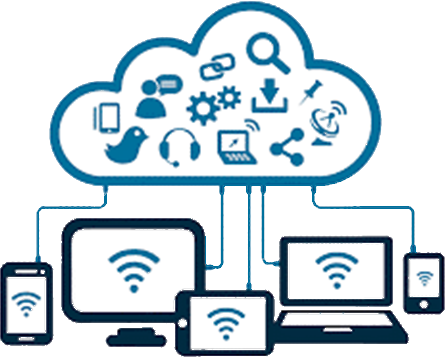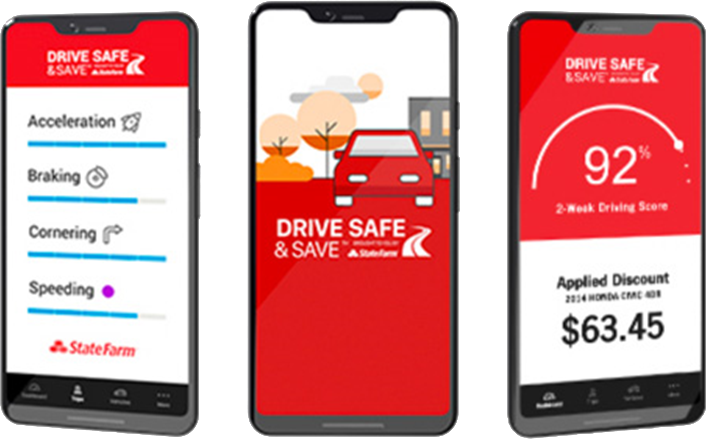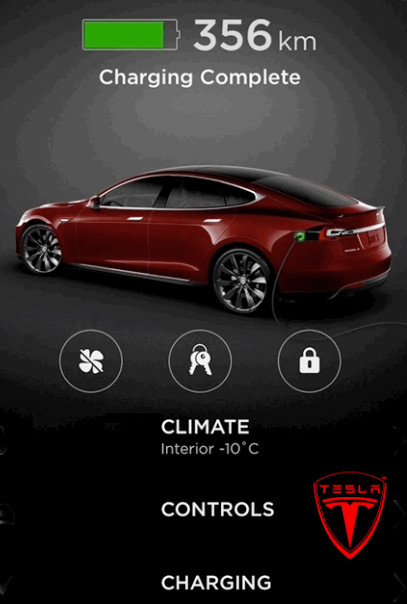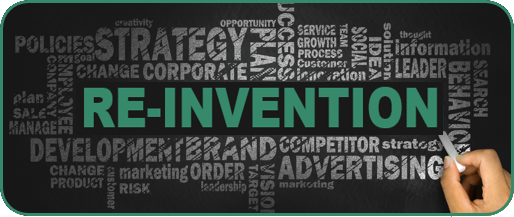| © 2022 Black Swan Telecom Journal | • | protecting and growing a robust communications business | • a service of | |
| Email a colleague |
January 2020
Subex’s COO: Machine Learning, Disruption and Adaptive Biz Models to Impact Telecoms
in 2020

At New Years’ time, people often reflect on their lives and make resolutions to gain good habits or plan personal goals for the coming year.
Likewise, I think it’s important for companies — and even work teams in those companies — to yearly assess their direction and the external forces affecting them.
In our dynamic and digital-driven world, telecoms and enterprises face many business risks these days. In fact, today’s winning product or service may soon be obsoleted by improved methods, new technologies, and black swan events not expected.
So what can a business team do to protect itself and plot a successful future?
Well, imagine your team is paddling a raft down a mighty river. And that raft is competing with other rafts to see which team first arrives at the down-stream base camp — where all the tasty food and warm campfire is.
To win the race, I think, requires assessing two forces: 1) the propellers that speed you up; and 2) the resistance that causes drag or reduces your speed.
- One propeller of your raft might be to do some team training before the race. A little practice in properly guiding and paddling the raft should produce a boost in performance.
- For resistance, think about all those dangerous rocks and rapids in the river. Better to map those out ahead of time because a sunken or capsized raft will ruin your day — and the river water is bound to be quite cold.
OK, so what about the telecom industry? What trends are propelling the industry forward or dragging it down?
Well, to answer that question, perhaps it’s best to talk with someone whose job causes him to think about such questions all the time. . . someone like Shankar Roddam, the Chief Operating Officer of Subex.
In December, Shankar and I got on the phone to discuss key trends for 2020. I found his analysis quite thought-provoking:
| Dan Baker, Editor, Black Swan Telecom Journal: Shankar, as a researcher, I naturally favor surveys for capturing trends. But while surveys are useful, I’d actually prefer your approach of traveling the world and having first hand discussions with top telecom and enterprise decision makers. |
Shankar Roddam: Thanks for the opportunity to discuss these trends, Dan. What I’m typically doing in my travels is meeting with customers to discuss their strategic direction and present new solutions to them. So, the questions I get from telcos and enterprises give me a pretty good barometer of what’s happening.
I have organized my thoughts into five key trends. Let me walk through them now for you and your readers:
1. Proliferation of Connected Devices.
The whole ecosystem is talking about connectivity, and devices getting smarter. Some experts are predicting there will soon be four devices connected for every human being on the planet.

So the expectations are we’ll see exponential growth in the rate at which connected devices are going to come up. And of course, that includes a host of IoT sensors, meters, home control panels, and connected cars.
And those devices will vary widely in terms of requirements for connectivity, security and mission priority. And all of those requirements must be synchronized to ensure the ecosystem works as intended.
2. Big Spike in the Amount of Data being Consumed
Now to complement the big growth in devices, we’ll also see a corresponding increase in the data being consumed.
And as we look at data trends, we know that different regions of the world face different challenges. Developing nations are seeing rapid growth in smart phones and high bandwidth services. In more advanced economies, 5G and the Internet of connected things will expand communications-rich and analytics-rich work-styles and life-styles to even higher levels than exist today.
Now aside from the significant amount of content data being created and shared, another big pool of data being exchanged is analytics data — data we use to optimize business operations, measure customer experience, and make decisions about where to next take the business.
3. Democratized Machine Learning
A couple years back, when I visited customers and gave presentations to them about our solutions, I would often get the question: “How is Subex leveraging machine learning?” And I imagine other solution providers heard similar questions.

But interestingly, these days I now no longer hear that question at all. And that shows me there’s been a mindset shift. Today, managers and executives in the business simply assume machine learning has become a practical necessity.
And that directly relates to the forces I just mentioned: 1) the explosion in devices; and 2) the huge spike in data coming from on-line services and the analysis of those services.
Since our industry moves so fast, if you’re going to make critical decisions, you often don’t have the time to analyze business with off-line analytics with lots of human input.
Today there’s a great need for real-time answers. How do we capture — right now — enough intelligence above and beyond what we already know? And, of course, that’s why machine learning is so critical.
Here are three other important consequences of growth in machine learning I foresee:
- Machine learning will deliver a far greater number of recommendations to take potential action on. And these will far outnumber the recommendations managers usually make on their own.
- Machine learning will do the investigative and analytic work of multiple human experts. And those experts can be redeployed on other, more critical tasks.
- Machine learning tools and techniques will become more democratized in the organization and easier to setup and use, which will vastly increase the number of ML use cases
As analytics continues to grow, we will see a shift towards Augmented analytics — where systems become intelligent enough to start telling users what they do not already know.
This means that we will be moving from a rule-based approach catering to a certain set of scenarios, to a situation wherein the systems would start self-learning and thereby making significantly more recommendations.
4. Rapid Intelligence Leads to Disruptive Innovation
As we look at digital transformation — and the huge number of digital products and services coming into the marketplace — that’s certainly going to cause major disruptive innovation.
As new digital or IoT services gain a foothold — in health care, education, insurance, entertainment, and many other industries — they will surely upset the current way of delivering such services.
Recently in the U.S., State Farm became the first national auto insurance firm to promote customers earning “safe driver discounts” based on driving speed and other auto safety factors monitored in real-time by an app on the driver’s mobile phone in the car.

Depending on how well the service works for State Farm, this kind of safe driver mobile app could greatly disrupt the auto insurance business.
But the key challenge State Farm faces today is an analytic one: how best to understand the market acceptance and financial performance of this new insurance service? Many key questions will be raised, for instance:
- What are the popular or disliked features of the service?
- How well does the service attract new customers to State Farm?
- What monetary value of safe driver discount is optimal?
- What demographic groups should State Farm market the service to?
And companies like State Farm will want near real-time answers to those and hundreds of other vital questions. So once again, companies like State Farm, have a great need to adopt machine learning models that learn by themselves.
5. Adopting & Rapidly Flexing New Business Models
Now, if strong competition and disruptive innovation have become the norm, then non-standard business models and an ability to quickly flex or adapt them are also vital to the future.
Take this case from Tesla Motors, the manufacturer of electric cars:

In 2018, a powerful hurricane was bearing down on the southeastern United States. And many owners of Tesla cars — who were in the path of the hurricane — wanted to drive a hundred or more miles out of danger. Trouble was, they were somewhat restricted by the relatively short range they could travel on a single battery charge.
Responding to this challenge, Tesla remotely configured the batteries of Tesla cars in the hurricane-threatened region to temporarily load up a higher battery storing capability than normal. This allowed Tesla owners to drive longer distances on a single battery recharge and successfully escape the hurricane area.
Now remotely configuring car batteries with a higher storage capacity was certainly an innovative solution. And while the decision to temporarily configure the batteries certainly added extra costs for Tesla, it turned out to be a bigger winner for it showed how adaptable Tesla’s service was. And in that way it distinguished the Tesla brand above those of other electric car makers.
The same kind of challenge faces telcos, enterprises, and other organizations. In a world where competing products look pretty similar, the ability to flex business models and deliver special services can add great value.
If you look at telcos across the world, investing in new business models is widely occurring, for example:
- In Kuwait of the Middle East, there are two telcos and both of them acquired ISPs to be able to better cater to enterprise needs.
- Some telcos in the Asia-Pacific region had the mobile and fixed sides of their businesses come together so they could better serve the enterprise market.

Then there are the “transformational telcos”, forward-thinking traditional organizations who are reinventing what it means to be a telco. Some favor growing services internally; others are acquiring new businesses for example:
- Econet has launched Vaya, an Uber-like service in Zimbabwe
- MTN in South Africa has tried to create their own “Spotify”-like services within South Africa for their customers
- Reliance Jio has just bought a music streaming service called Saavn to allow customers to stream and download music
- Telefonica has spent a significant amount of money on security and cybersecurity — including multiple acquisitions. And so Telefonica is staking its reputation on being better in security
- Some CSPs in the U.S. are acquiring mobile television companies to compete with Netflix in the entertainment sector
So that concludes the five key trends I’ve been mulling over in my head the past few weeks. Whether they agree with my predictions or not, I hope this gets your readers thinking.
| It’s an excellent thought-starter for me, Shankar. Thank you for these insights, and good luck to you and all Subexians in 2020. |

Try the rough water as well as the smooth. R. W. Emerson (1860)
Copyright 2020 Black Swan Telecom Journal
Black Swan Solution Guides & Papers
- Expanding the Scope of Revenue Assurance Beyond Switch-to-Bill’s Vision — Araxxe — How Araxxe’s end-to-end revenue assurance complements switch-to-bill RA through telescope RA (external and partner data) and microscope RA (high-definition analysis of complex services like bundling and digital services).
- Lanck Telecom FMS: Voice Fraud Management as a Network Service on Demand — Lanck Telecom — A Guide to a new and unique on-demand network service enabling fraud-risky international voice traffic to be monitored (and either alerted or blocked) as that traffic is routed through a wholesaler on its way to its final destinations.
- SHAKEN / STIR Calling Number Verification & Fraud Alerting — iconectiv — SHAKEN/STIR is the telecom industry’s first step toward reviving trust in business telephony — and has recently launched in the U.S. market. This Solution Guide features commentary from technology leaders at iconetiv, a firm heavily involved in the development of SHAKEN.
- Getting Accurate, Up-to-the-Minute Phone Number Porting History & Carrier-of-Record Data to Verify Identity & Mitigate Account Takeovers — iconectiv — Learn about a recently approved risk intelligence service to receive authoritative and real-time notices of numbers being ported and changes to the carrier-of-record for specific telephone numbers.
- The Value of an Authoritative Database of Global Telephone Numbers — iconectiv — Learn about an authoritative database of allocated numbers and special number ranges in every country of the world. The expert explains how this database adds value to any FMS or fraud analyst team.
- The IPRN Database and its Use in IRSF & Wangiri Fraud Control — Yates Fraud Consulting — The IPRN Database is a powerful new tool for helping control IRSF and Wangiri frauds. The pioneer of the category explains the value and use of the IPRN Database in this 14-page Black Swan Solution Guide.
- A Real-Time Cloud Service to Protect the Enterprise PBX from IRSF Fraud — Oculeus — Learn how a new cloud-based solution developed by Oculeus, any enterprise can protect its PBX from IRSF fraud for as little as $5 a month.
- How Regulators can Lead the Fight Against International Bypass Fraud — LATRO Services — As a regulator in a country infected by SIM box fraud, what can you do to improve the situation? A white paper explains the steps you can and should you take — at the national government level — to better protect your country’s tax revenue, quality of communications, and national infrastructure.
- Telecom Identity Fraud 2020: A 36-Expert Analysis Report from TRI — TRI — TRI releases a new research report on telecom identity fraud and security. Black Swan readers can download a free Executive Summary of the Report.
- The 2021 State of Communications-Related Fraud, Identity Theft & Consumer Protection in the USA — iconectiv — This 49-page free Report on communications-related fraud analyzes the FTC’s annual Sentinel consumer fraud statistics and provides a sweeping view of trends and problem areas. It also gives a cross-industry view of the practices and systems that enable fraud control, identity verification, and security in our “zero trust” digital world.
Recent Stories
- Epsilon’s Infiny NaaS Platform Brings Global Connection, Agility & Fast Provision for IoT, Clouds & Enterprises in Southeast Asia, China & Beyond — interview with Warren Aw , Epsilon
- PCCW Global: On Leveraging Global IoT Connectivity to Create Mission Critical Use Cases for Enterprises — interview with Craig Price , PCCW Global
- Subex Explains its IoT Security Research Methods: From Malware & Coding Analysis to Distribution & Bad Actor Tracking — interview with Kiran Zachariah , Subex
- Mobile Security Leverage: MNOs to Tool up with Distributed Security Services for Globally-Connected, Mission Critical IoT — interview with Jimmy Jones , Positive Technologies
- TEOCO Brings Bottom Line Savings & Efficiency to Inter-Carrier Billing and Accounting with Machine Learning & Contract Scanning — interview with Jacob Howell , TEOCO
- PRISM Report on IPRN Trends 2020: An Analysis of the Destinations Fraudsters Use in IRSF & Wangiri Attacks — interview with Colin Yates , Yates Consulting
- Telecom Identity Fraud 2020: A 36-Expert Analyst Report on Subscription Fraud, Identity, KYC and Security — by Dan Baker , TRI
- Tackling Telecoms Subscription Fraud in a Digital World — interview with Mel Prescott & Andy Procter , FICO
- How an Energized Antifraud System with SLAs & Revenue Share is Powering Business Growth at Wholesaler iBASIS — interview with Malick Aissi , iBASIS
- Mobileum Tackles Subscription Fraud and ID Spoofing with Machine Learning that is Explainable — interview with Carlos Martins , Mobileum


